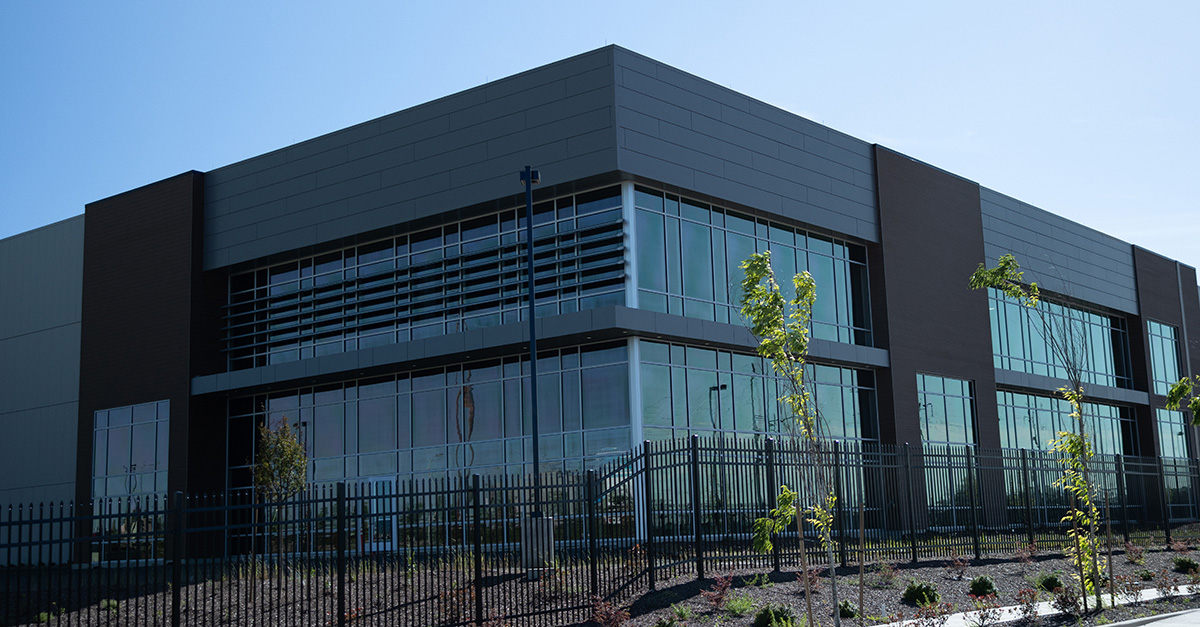The future of colocation: Enhanced data center capabilities for AI
A thought-leader discussion on the future of data centers in the AI era

As the data center industry continues to evolve, the intersection with Artificial Intelligence (AI) is shaping the way businesses approach their infrastructure. Our recent FlexTalk webinar, Data centers in the AI era: Emerging trends and strategies for 2024, brought together Flexential thought leaders to discuss key themes and share reflections and predictions for the year ahead.
Moderated by James Ochoa, VP of Cloud, the discussion covered several pivotal themes, including advanced data center capabilities, security challenges, multi-cloud hybrid strategies, AI's impact on business, disaster recovery, and the pressing need for sustainable practices in data center construction. This article recaps their discussion around the urgent need for advanced data center infrastructures, emphasizing high-performance computing (HPC), efficient power and cooling systems, and low-latency networks, along with the critical role of GPUs and the influence of 5G and IoT.
Reflections
As the panelists shared their reflections on the previous year, Jason Carolan, CINO, highlighted the ongoing challenge of making hybrid IT work. The IT leaders of today are still grappling with finding the right combination of capabilities, considering different solutions for various workloads, and dealing with the concept of cloud repatriation.
“It's becoming real, in a sense, that while there are just AI workloads, and we're talking about that primarily here, there are CPU-based workloads that aren't going anywhere either.”
—Jason Carolan, CIO
CRO Pat Doherty, provided insights into the pace of the market, noting the quick movement of transactions and the strong demand for AI across enterprises. The observation signaled a positive sign for the overall health of the data center infrastructure industry.
“These deals were moving quickly. […] Very strong demand across the enterprise and across all markets in the U.S.... a real good sign of the overall health.”
—Pat Doherty, CRO
Lastly, Ryan Mallory, COO, shed light on the unexpected challenges faced in 2023, particularly in the supply chain. Despite initial expectations, the supply chain for equipment and infrastructure faced headwinds, impacting timelines for obtaining critical resources.
The Impact of AI impact on data centers in the coming year
All three leaders shared their predictions for the year, with a focus on AI's impact on data center demands. Pat Doherty discussed the early stages of AI's influence, anticipating hockey stick growth and emphasizing the importance of data center providers capable of handling high-density deployments. This includes considerations for scalability, power draw, and the adoption of liquid cooling.
The discussion highlighted a broader aperture for AI workloads beyond traditional markets like Silicon Valley and Northern Virginia. The industry is witnessing a shift where AI-driven enterprises prioritize deployment speed over specific markets, leading to unexpected locations hosting AI deployments.
AI workloads and market dynamics
The conversation highlighted the need for various chip makers and the specific requirements for high-density workloads. The deployment of AI workloads in locations like Hillsboro and Dallas-Fort Worth emphasized the dynamic nature of the market. Ryan emphasized the need for a creative and technological approach to support unique use cases, pointing out the increasing trend of companies like AMD incorporating CPU and GPU sharing.
The intersection of AI and data center challenges
As the discussion unfolded, the challenges associated with managing power, cooling, and infrastructure for AI workloads became apparent. Jason underscored the complexity introduced by the competition for deployments, especially with the emergence of AI barons focusing on building large language models. The shift towards inference workloads and the significance of network capabilities in reducing latency for AI applications were discussed.
FlexAnywhere® Platform and workload placement
The conversation then shifted to the role of the FlexAnywhere® platform in enabling the adoption of AI workloads. Jason highlighted the platform's capability to reach Tier 2 and Tier 3 markets, emphasizing the importance of proximity to workloads for low-latency applications. The discussion touched upon the flexibility of the platform, supporting both network capabilities and cloud infrastructure as a service.
“So different types of solutions for different types of workloads. We hear about repatriation a lot. The IT leaders of today are still trying to make sure that they've got the right combination of capabilities.”
—Jason Carolan, CIO
Ryan shared how, with the launch of Flexential Fabric, users now “have the ability to drive single port provisioning to public and private assets and start to flatten the overall IT stack.” For companies that want to consume not only those cloud infrastructure capabilities, data protection, and network services but also link multiple regions inside the U.S. together, this revolutionary, customer-driven interconnection solution is certainly a game-changer, catching the eye of industry experts.
Conclusion
As we navigate the AI era in the data center industry, challenges and opportunities lie ahead. From grappling with hybrid IT to adapting to the quick pace of AI-driven transactions, the industry is evolving more rapidly than ever. The need for data center providers capable of handling high-density requirements and broader geographical demand for AI workloads emphasizes the dynamic nature of the field. As we move quickly into 2024, the lessons learned from 2023 will undoubtedly guide businesses in optimizing their data center strategies for the AI era.
Watch the entire FlexTalk, on-demand, to get all the insights and predictions for the next era in data centers.






